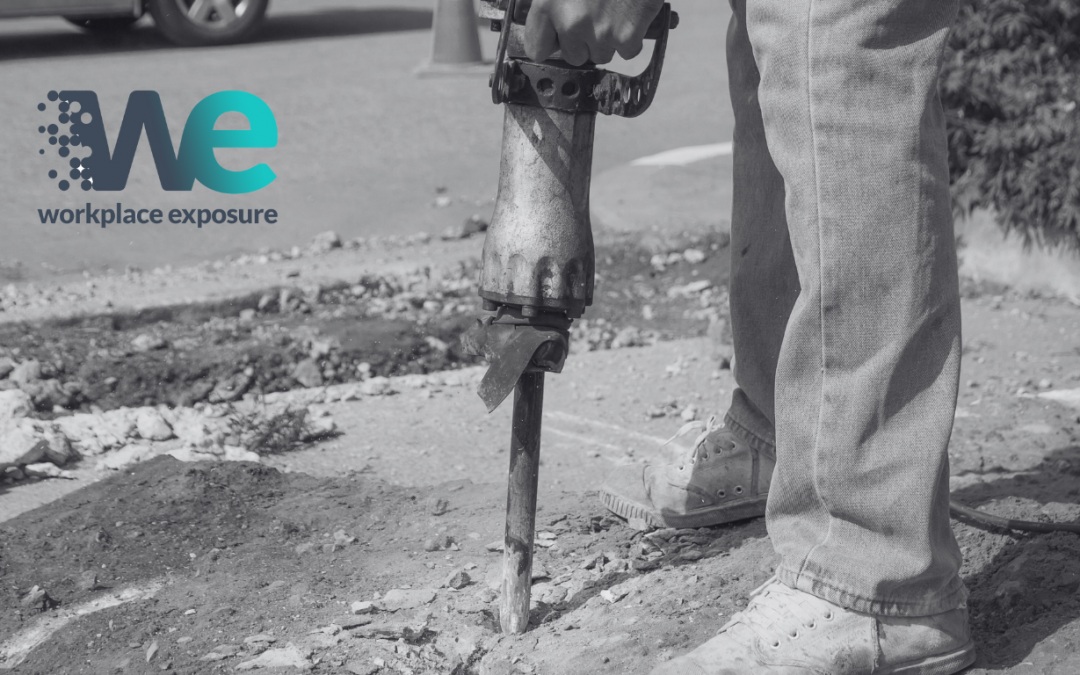Why Hand Arm Vibration is a Growing Concern in the UK
In the UK, hand arm vibration (HAV) is a serious occupational health risk, particularly in high-risk sectors such as construction, manufacturing, and heavy industry.
Workers using vibrating tools like grinders, orbital sanders, drills, stone saws, and jackhammers are exposed to long-term health risks, including Hand Arm Vibration Syndrome (HAVS) – a preventable but permanent condition.
As awareness grows and regulations tighten, businesses are under increased pressure to assess, monitor, and mitigate vibration exposure. Failing to do so can result in legal action, hefty fines, loss of skilled workers, and damage to reputation.

What is Hand Arm Vibration (HAV)?
Hand Arm Vibration occurs when workers use power tools and machinery that transmit vibrations into the hands and arms. Regular, prolonged exposure can lead to HAVS, a serious medical condition affecting blood vessels, nerves, muscles, and joints of the hands and arms.
Common Symptoms of HAVS
– Tingling and numbness in fingers
– Loss of hand strength
– Blanching (whiteness) of fingertips, especially in cold
– Reduced dexterity and grip strength
– Long-term pain and discomfort

Industries at Risk: Where HAV Exposure is Highest
- Construction:
– Jackhammers
– Concrete breakers
– Compactors
– Impact drills - Manufacturing:
– Hand-held grinders
– Sanders
– Bench-top tools - Heavy Industry & Engineering:
– Shipbuilding
– Automotive
– Metal fabrication

The Legal Landscape: UK Regulations for HAVS
The Control of Vibration at Work Regulations 2005, enforced by the Health and Safety Executive (HSE), require employers to:
– Assess vibration risk levels
– Take action to reduce exposure
– Provide health surveillance for at-risk workers
– Keep records and monitor exposure continuously.
Key Vibration Limits:
– Exposure Action Value (EAV): 2.5 m/s² A(8)
– Exposure Limit Value (ELV): 5 m/s² A(8)

The Cost of Ignoring Hand Arm Vibration
– Fines & Compensation
– Loss of Productivity
– Insurance Costs
– Reputational Damage.
How Workplace Exposure Ltd Helps You Stay Compliant
Workplace Exposure Ltd specialises in HAV monitoring and exposure control solutions tailored to UK industries. Our goal is simple: to help businesses reduce risk, stay compliant, and protect their workforce.
Core Services:
1. Real-Time Hand Arm Vibration Monitoring
2. HAV Risk Assessments
3. Health Surveillance & Occupational Hygiene Support
4. Training & Awareness

Why Choose Workplace Exposure Ltd?
✅ UK-Based Experts
✅ End-to-End Support
✅ Custom Solutions
✅ Certified Equipment
✅ Transparent Reporting.
Understanding Whole Body Vibration (WBV) in UK Workplaces

What is Whole Body Vibration?
Whole Body Vibration (WBV) occurs when vibration is transmitted through a worker’s seat or feet while operating machinery or vehicles. This is especially common in sectors like construction, agriculture, mining, and logistics.
Unlike Hand Arm Vibration, which affects the hands and arms, WBV impacts the entire body — particularly the lower back and spine — potentially leading to serious musculoskeletal disorders.
Common Sources of WBV Exposure
– Forklift trucks
– Tractors and agricultural machinery
– Excavators and earth movers
– Industrial and construction vehicles
– Off-road and mining equipment

Health Risks of Whole Body Vibration
Prolonged exposure to WBV can result in:
– Lower back pain
– Spinal disc degeneration
– Digestive and circulatory disorders
– Fatigue and reduced concentration.
UK Legal Requirements for WBV
The Control of Vibration at Work Regulations 2005 also covers WBV. Employers must:
– Assess and monitor WBV exposure
– Reduce risks where possible
– Provide training and health surveillance
HSE Exposure Action and Limit Values for WBV:
– Exposure Action Value (EAV): 0.5 m/s² A(8)
– Exposure Limit Value (ELV): 1.15 m/s² A(8).
Monitoring and Managing WBV Exposure

Workplace Exposure Ltd supports businesses in managing WBV through:
– On-site WBV assessments
– Real-time monitoring systems for vehicles and machinery
– Help to introduce working methods which eliminate or reduce exposure
– Operator training to improve working practices
– Recommendations for, choosing work equipment of appropriate ergonomic design
Why Address Both HAV and WBV?
While HAV and WBV affect different parts of the body, both are covered under the same UK legislation and pose serious health risks. Monitoring both vibration types ensures a comprehensive approach to workplace safety and reduces your organisation’s legal and financial exposure.
FAQs About Hand Arm Vibration
Q: What tools cause the most HAV exposure?
A: Impact drills, jackhammers, grinders, and sanders.
Q: How often should HAV exposure be monitored?
A: Measure tasks first, with regular reviews
Q: Does Vibrating Equipment cause noise issues?
A: Yes, you may have to also consider risks from exposure to noise
Q: Is it a legal requirement to monitor vibration exposure?
A: Yes, under the Control of Vibration at Work Regulations 2005.
Q: Can you eliminate HAV exposure entirely?
A: No, but it can be minimised to safe levels
Final Thoughts: Make Vibration Safety a Business Priority
HAVS is not just a health issue – it’s a legal, financial, and reputational risk. But with the right systems in place, it’s entirely manageable.
Workplace Exposure Ltd provides the tools and expertise you need to:
– Understand vibration risks
– Monitor exposure in real-time
– Protect workers and business
Don’t wait for a HSE inspection. Stay compliant and prioritise worker health.
WE are here to help.
Our approach
Get in touch with Workplace Exposure. Either give us a call on 0800 689 4386, or fill in our enquiry form to discuss your monitoring or consultancy requirements.
We’ll then provide you with a no-obligation proposal, we can often give an initial idea of fees whilst we discuss your needs.
Once you’ve accepted our proposal, we can then schedule the work.
Following our site visit we’ll provide you with a comprehensive report giving you advice, recommendations and control measures where appropriate. Implement the outcomes for compliance and a happier healthier workplace.

